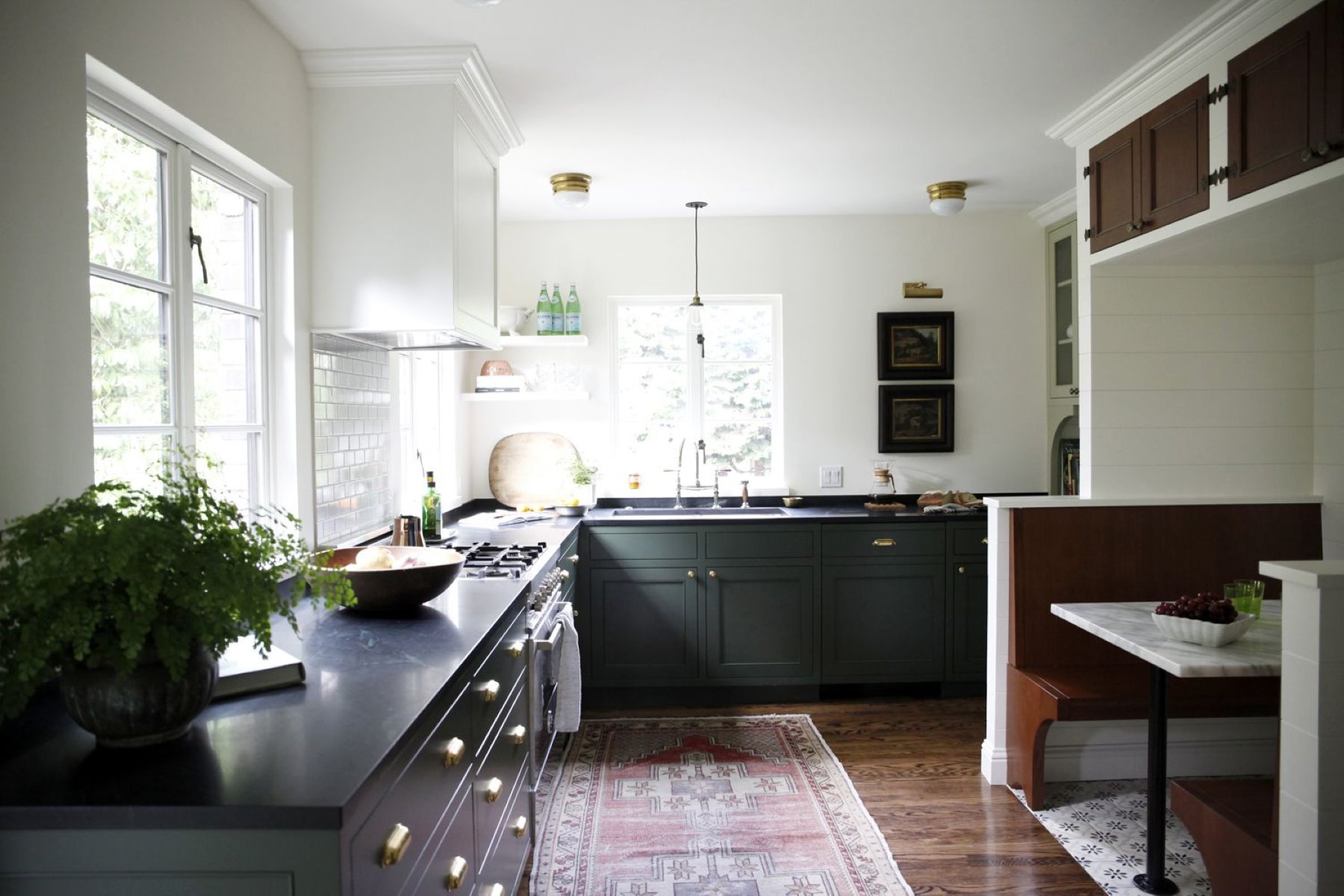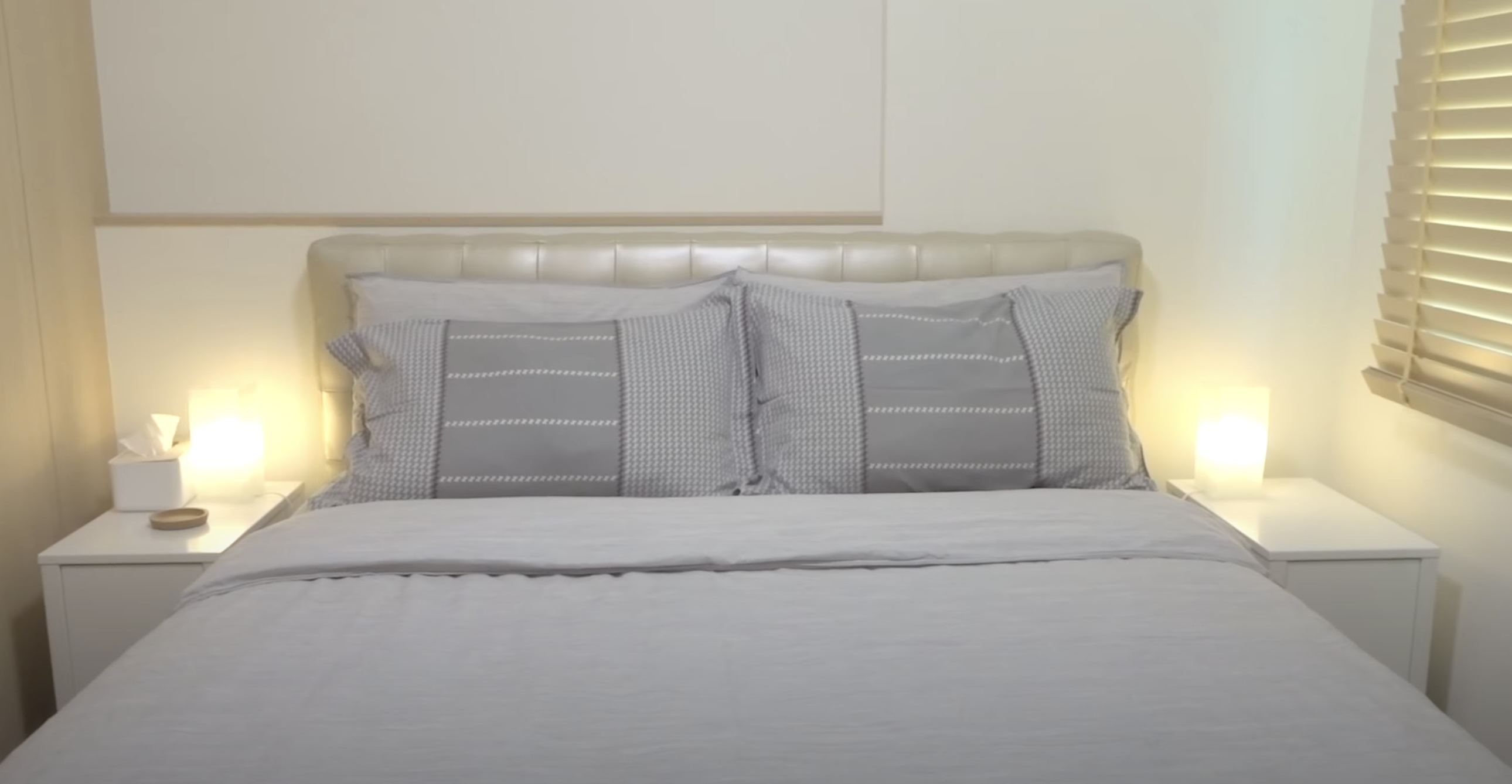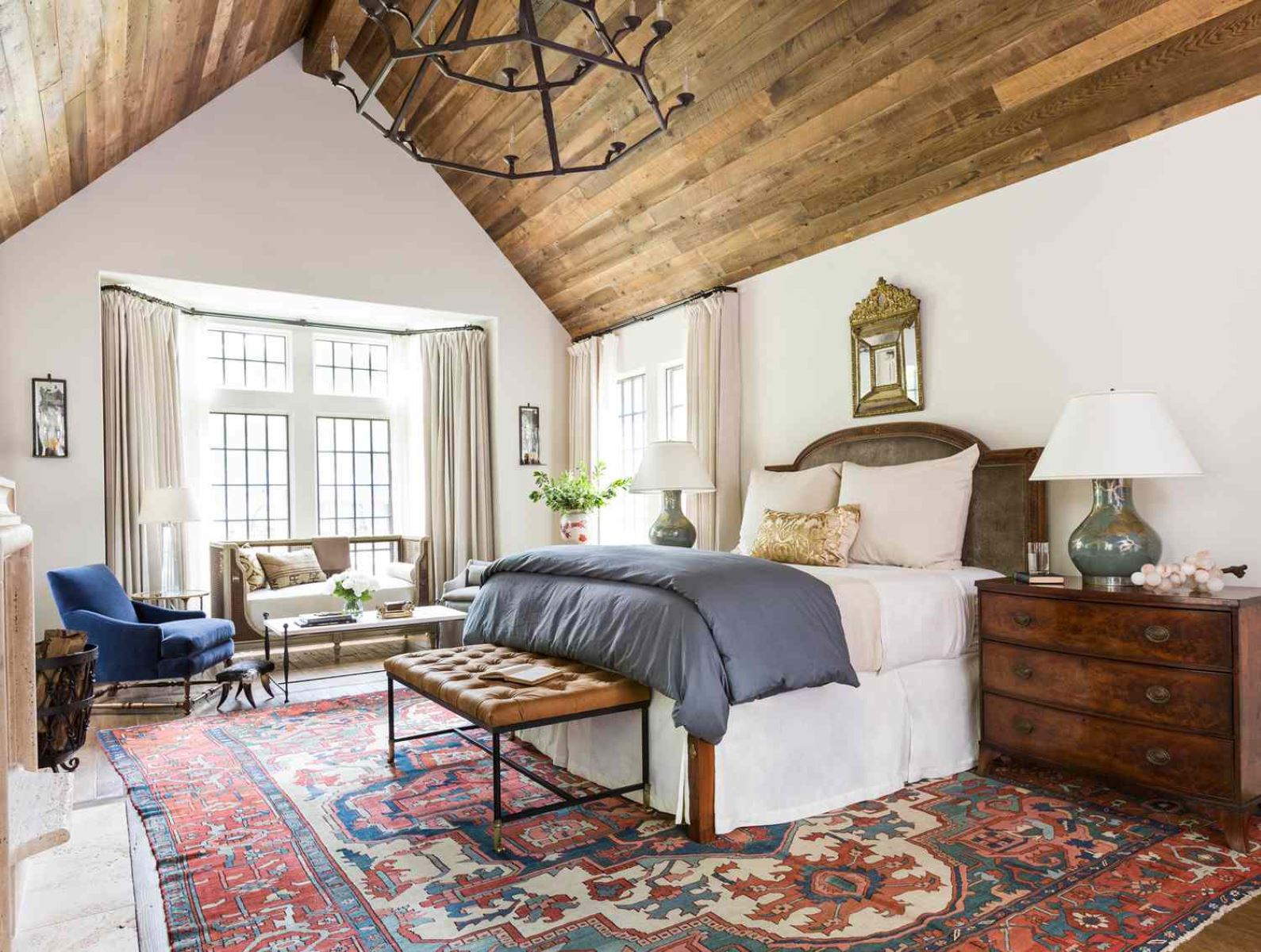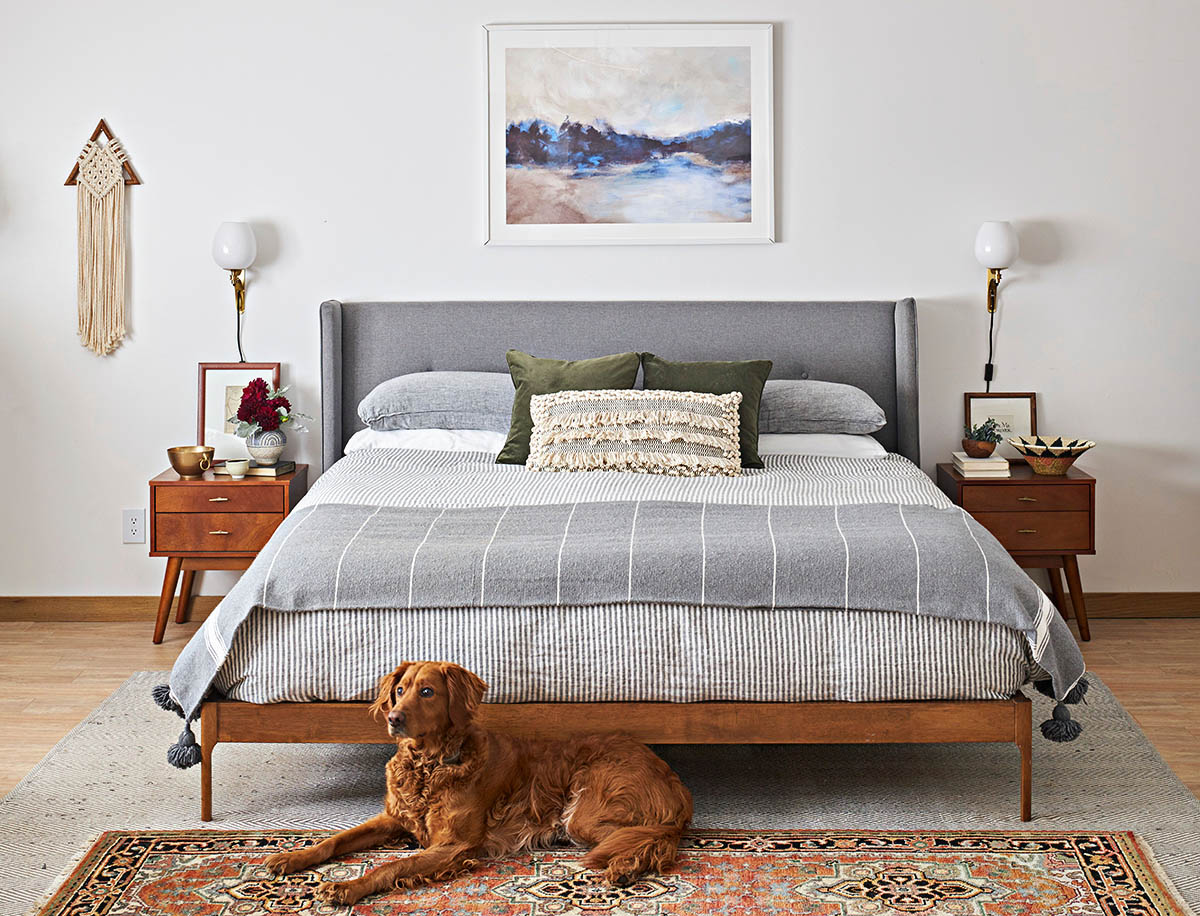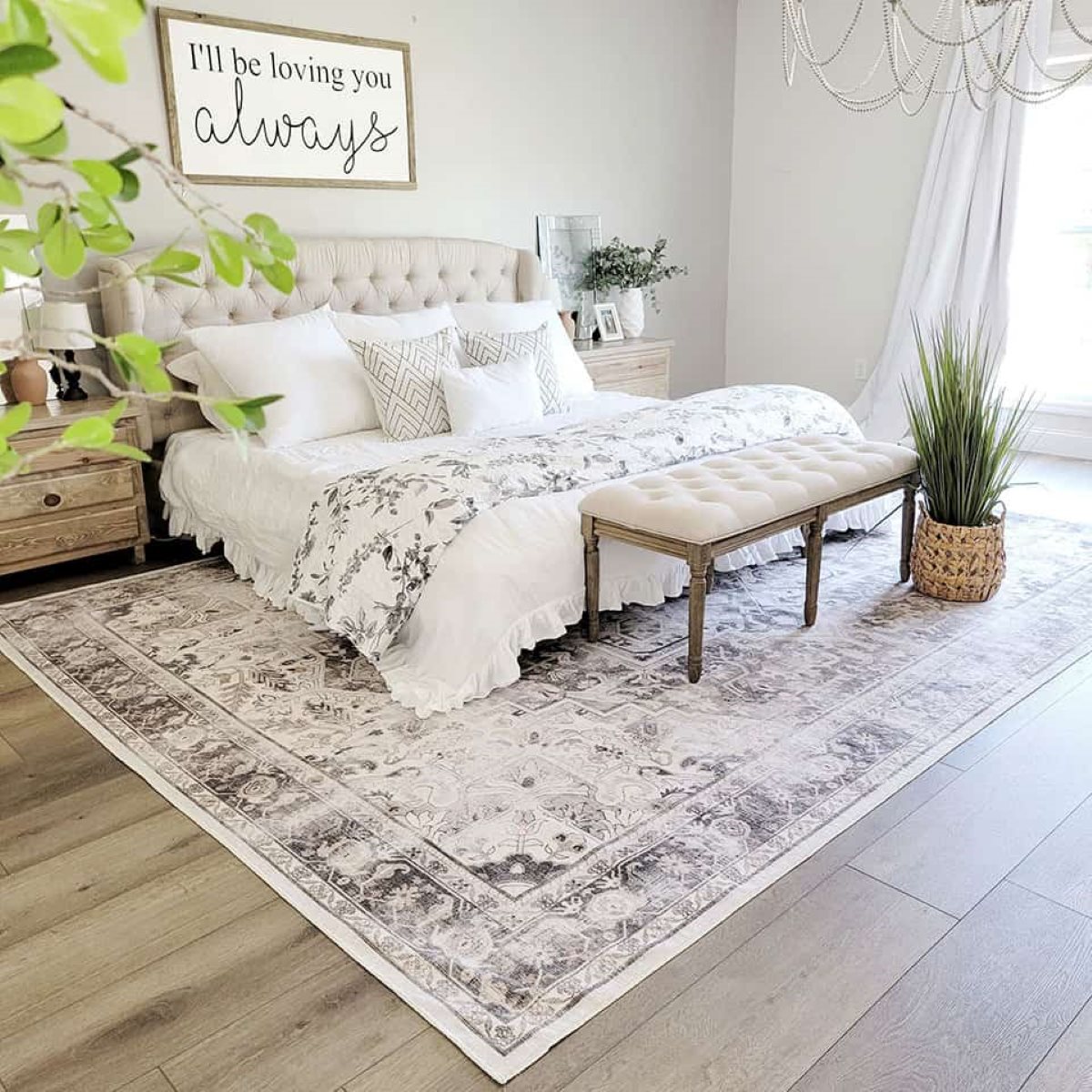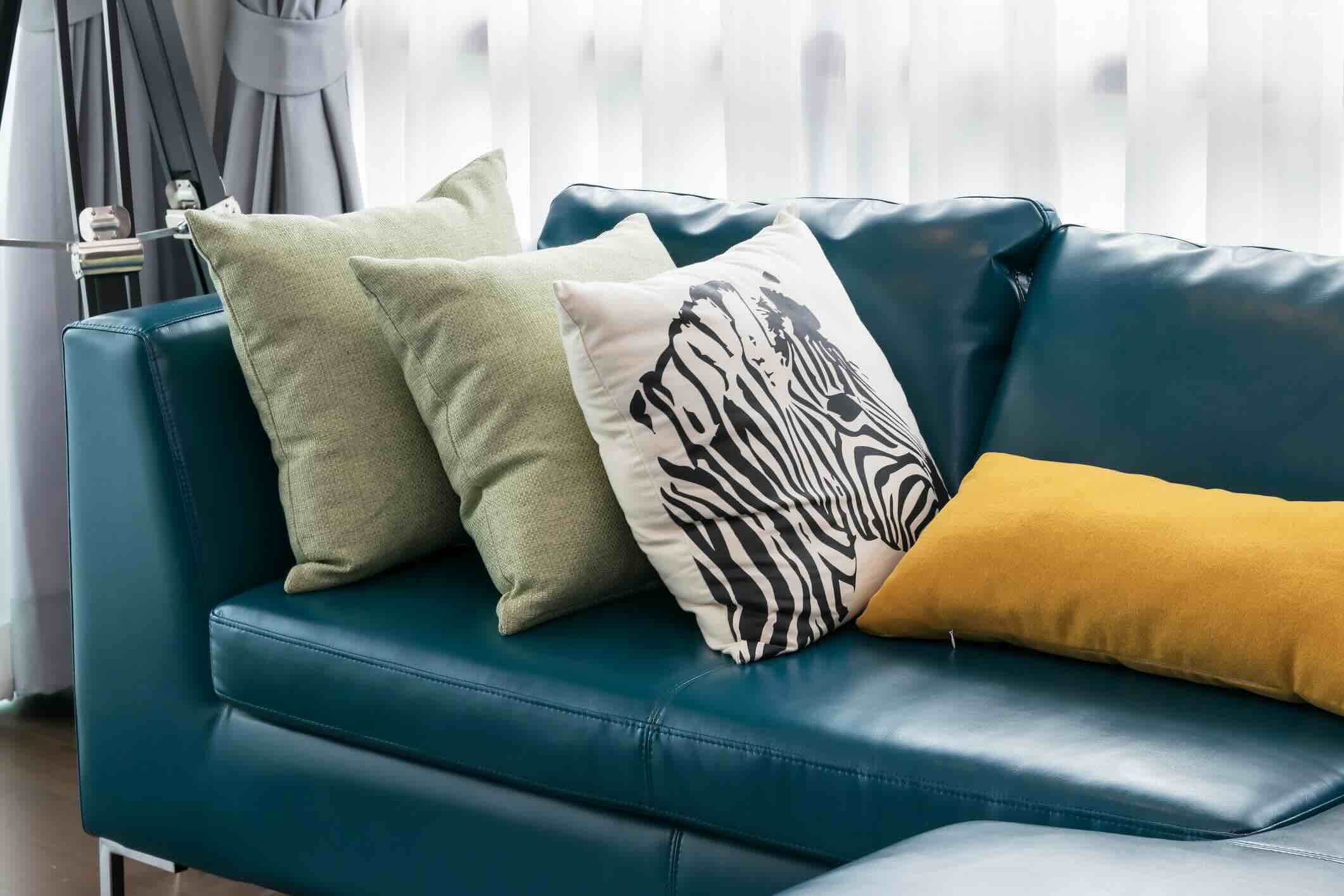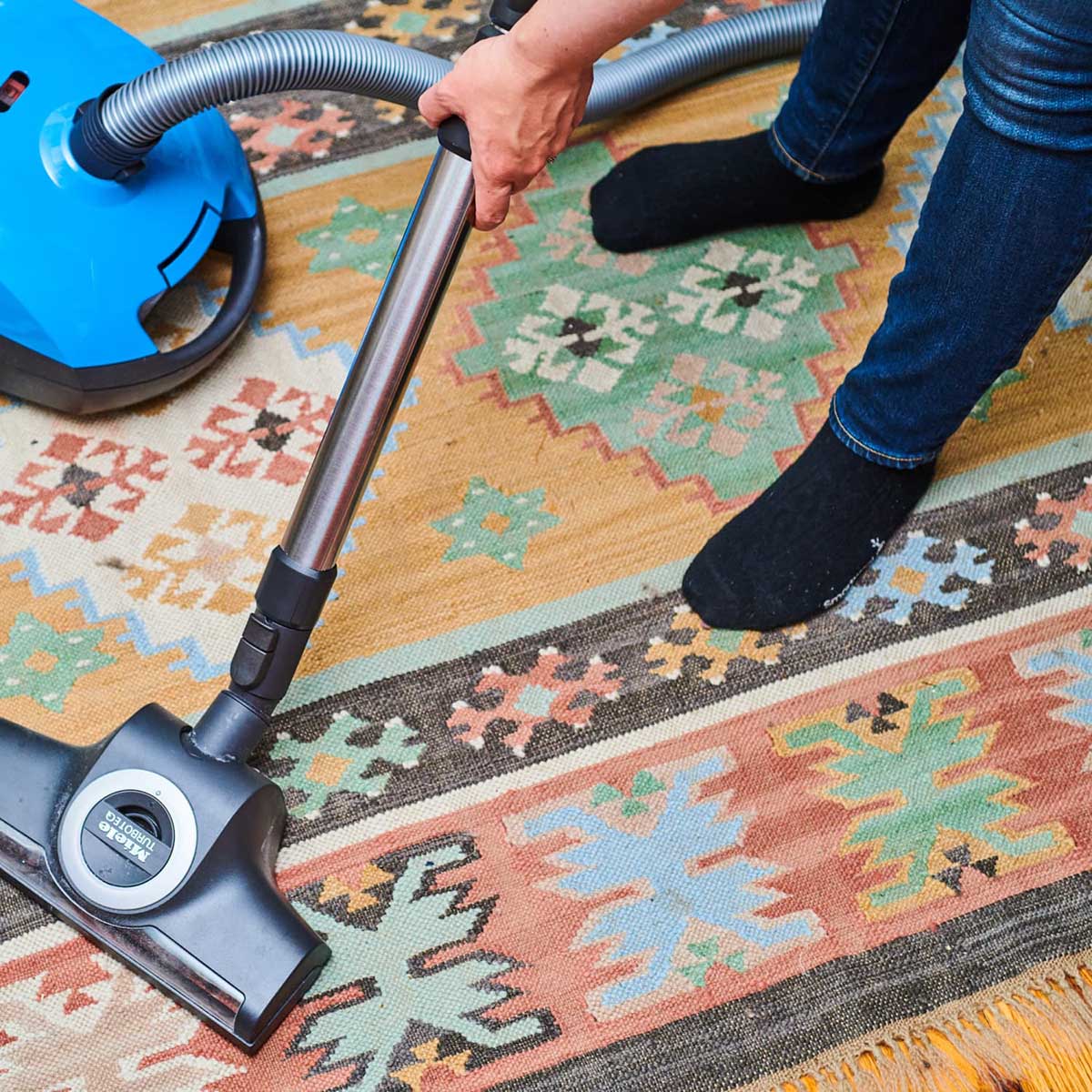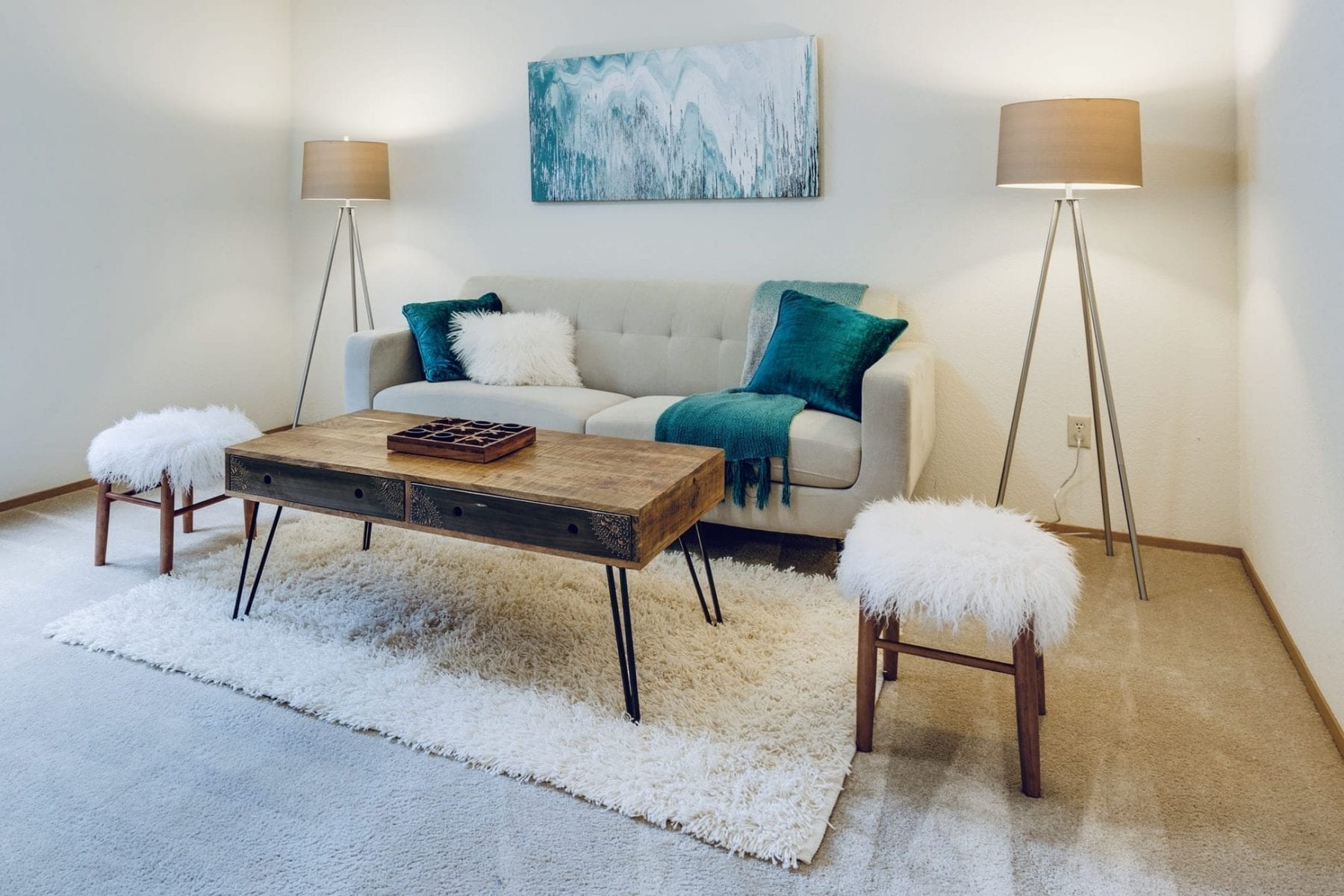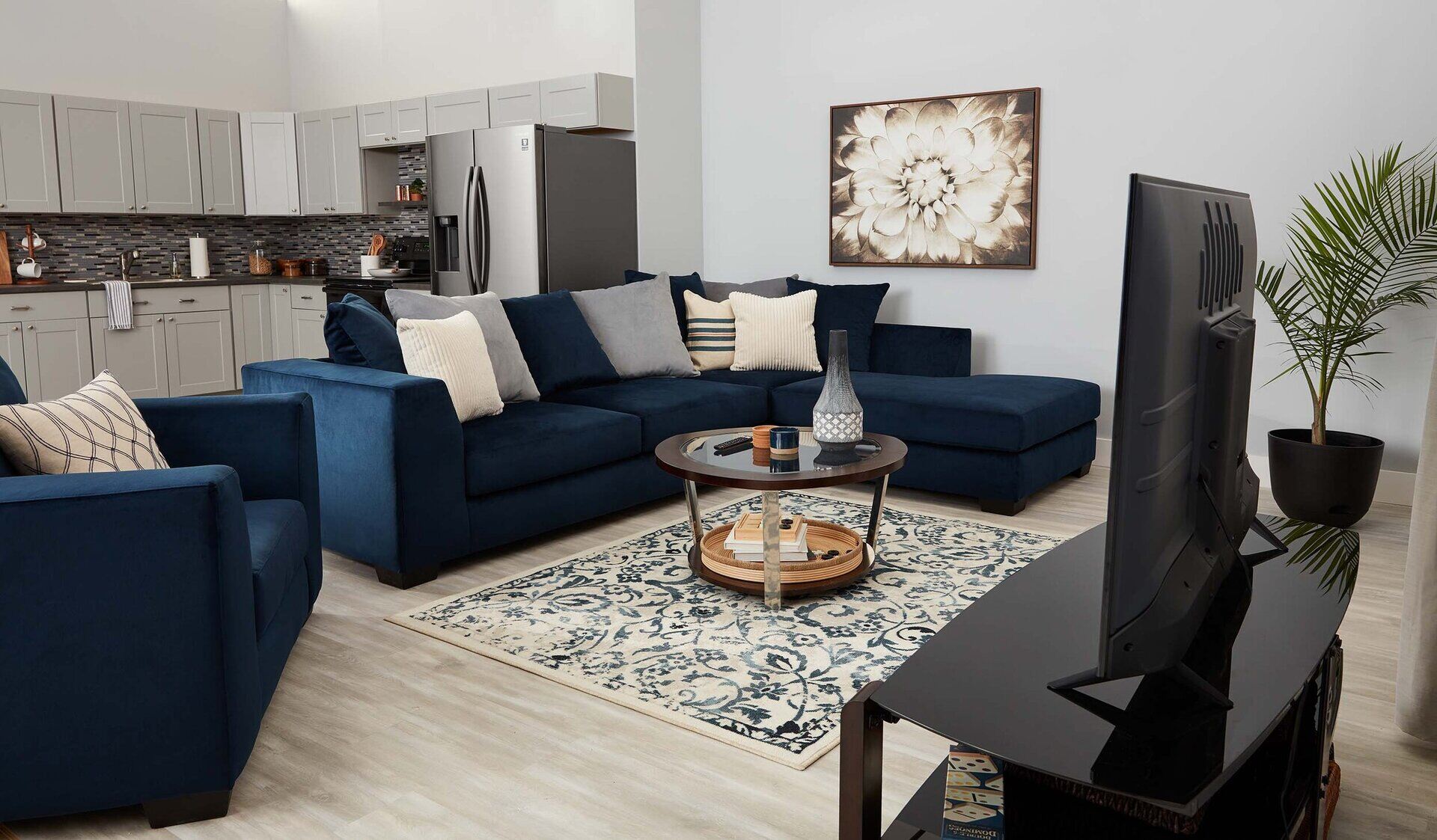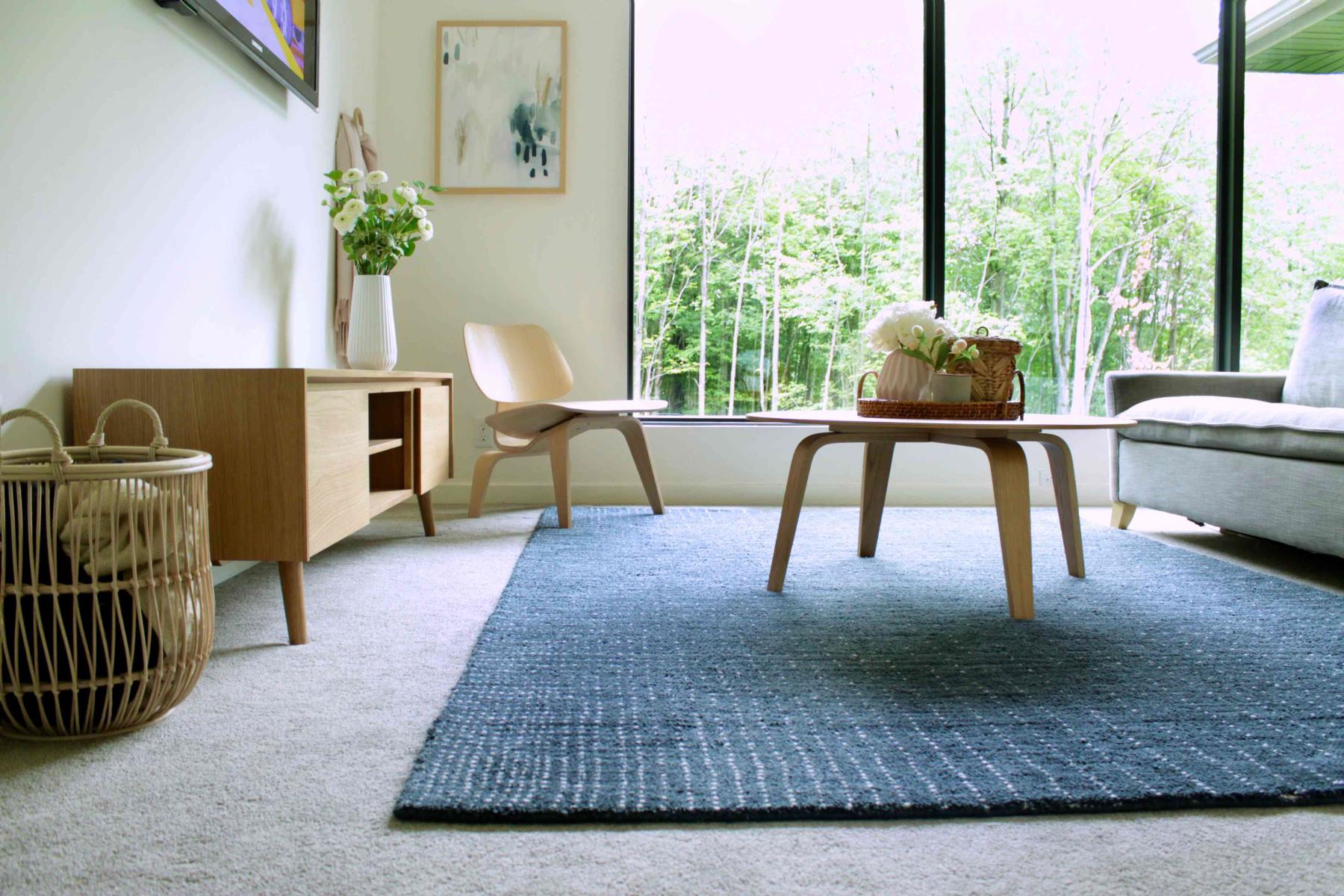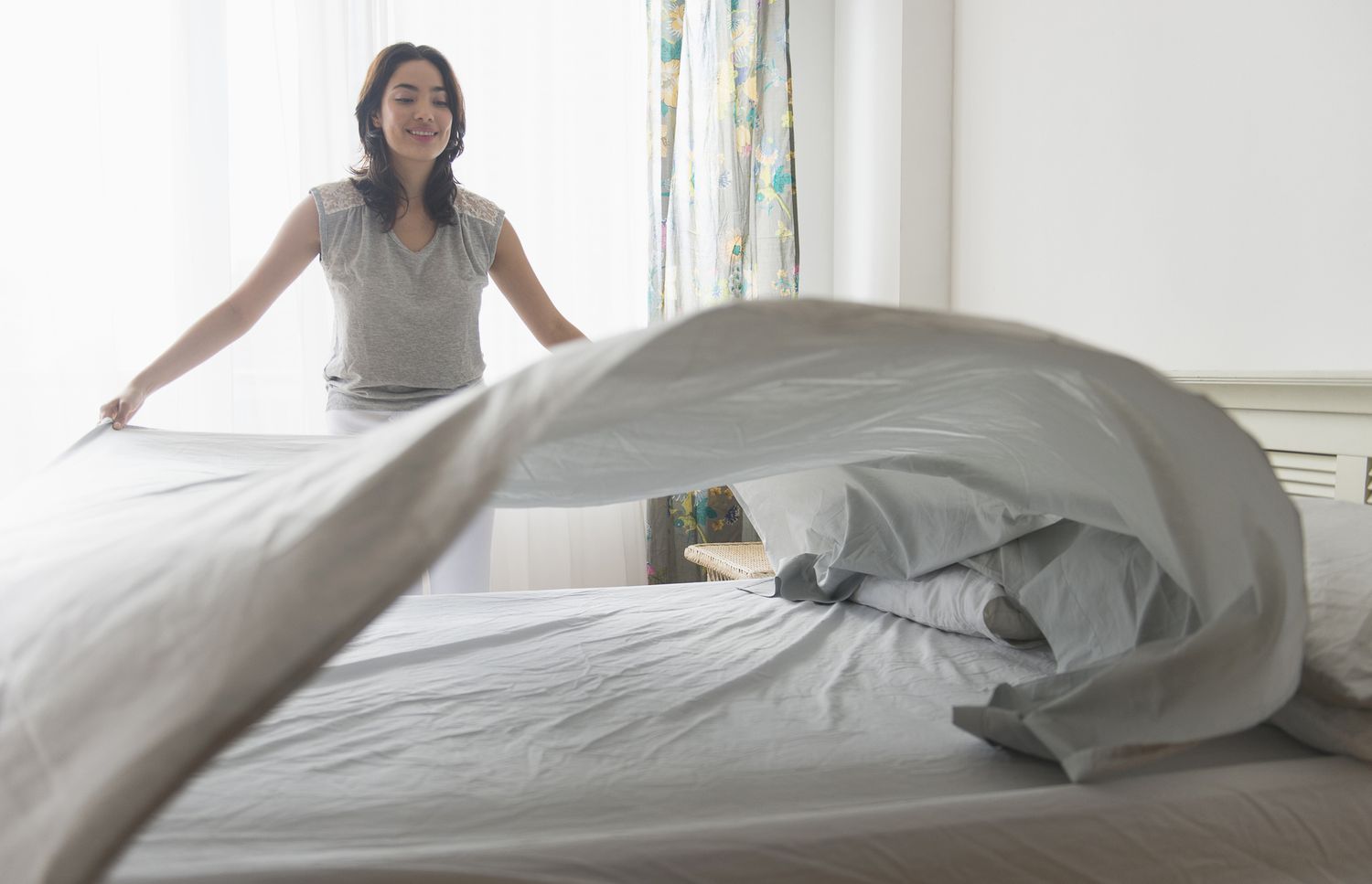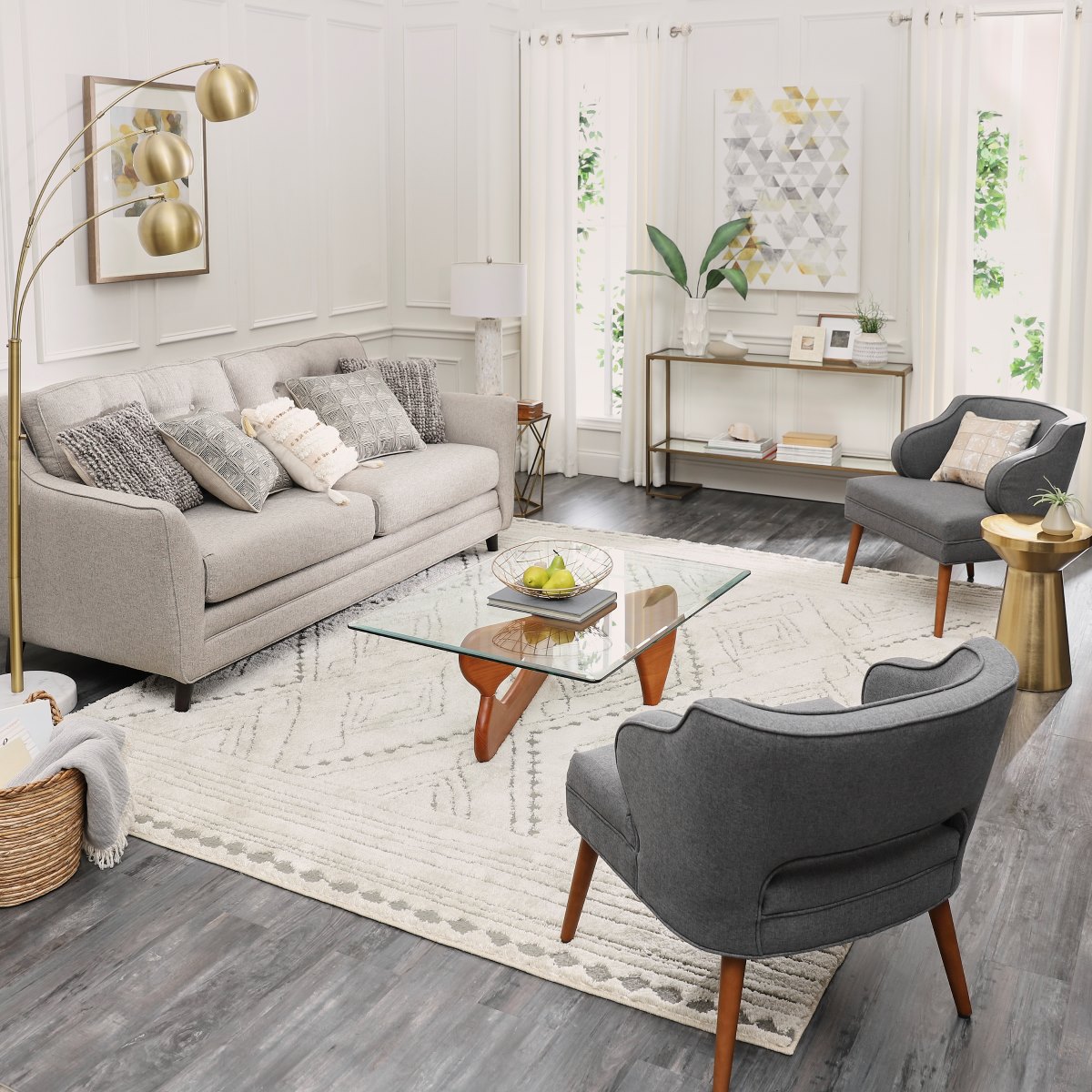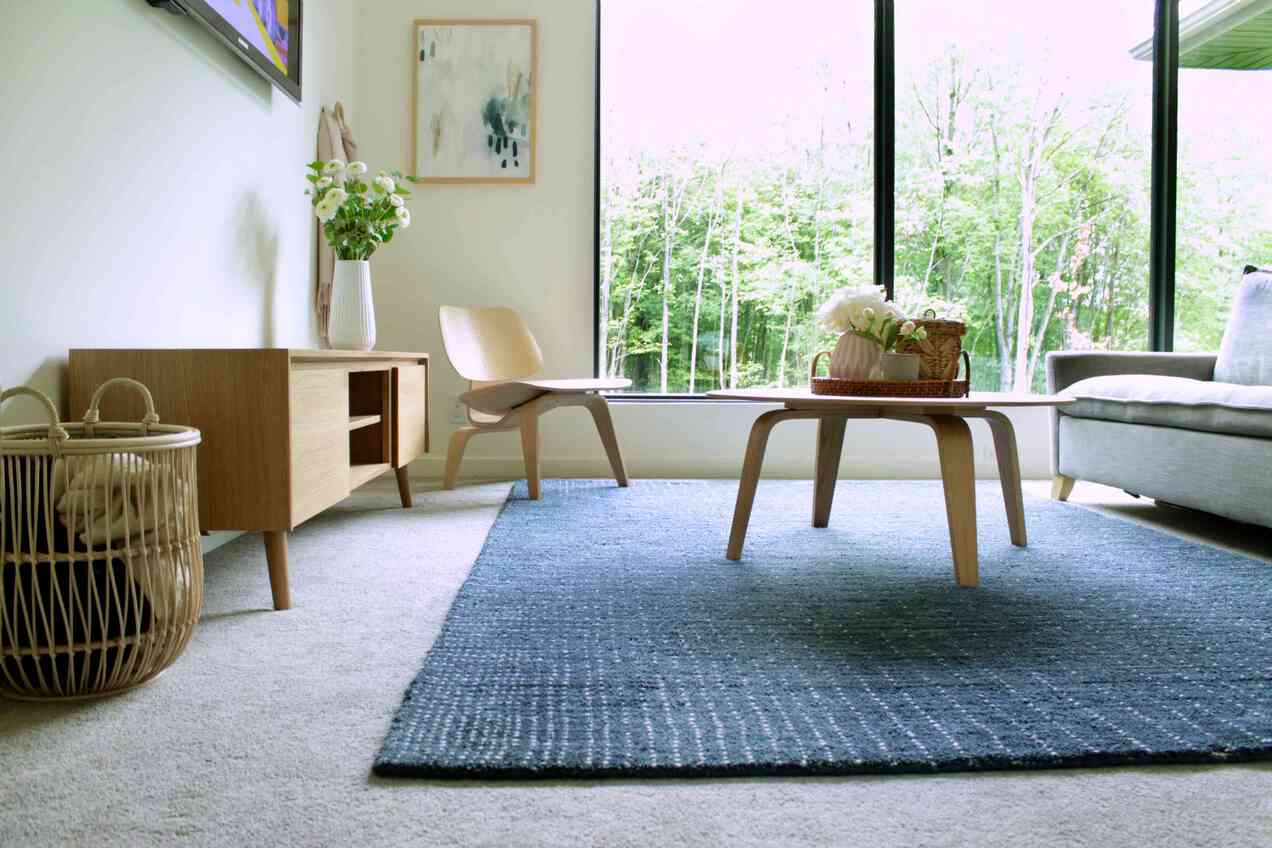

Articles
How To Get A Rug To Stay In Place On A Carpet
Modified: February 24, 2024
Discover effective techniques and tips for keeping your rug securely in place on a carpet with our informative articles. Say goodbye to slipping rugs for good!
(Many of the links in this article redirect to a specific reviewed product. Your purchase of these products through affiliate links helps to generate commission for Storables.com, at no extra cost. Learn more)
Introduction
Having a rug on top of your carpet can add warmth, style, and comfort to your living space. However, one common challenge that many people face with rugs on carpets is keeping them in place. A rug that constantly slides or moves around not only looks unsightly but also increases the risk of tripping and accidents.
In this article, we will explore the reasons why rugs slide on carpets and discuss effective methods for keeping them securely in place. Whether you have a small area rug in your living room or a large rug in your bedroom, these tips and techniques will help you maintain a stable and well-positioned rug.
So, if you’re tired of constantly adjusting your rug or frustrated with its constant movement, read on to discover valuable solutions to this common issue.
Key Takeaways:
- Say goodbye to sliding rugs with rug gripper pads, double-sided carpet tape, Velcro strips, rubber shelf liner, rug anchors, furniture placement, or professional installation. Enjoy a stable and secure rug on your carpet.
- Keep your rug in place with adhesive solutions, strong bonds, adjustable fastening, non-slip materials, specialized devices, strategic furniture placement, or expert installation. Say hello to a well-positioned and secure rug on your carpet.
Read more: How To Place Bathroom Rugs
Why Rugs Slide on Carpets
Understanding why rugs slide on carpets is the first step in resolving this issue. There are a few reasons why this happens:
- Lack of friction: Carpets are typically made of materials with a smooth surface, making it difficult for rugs to grip and stay in place. The smooth fibers of the carpet provide little friction, causing the rug to shift easily.
- Foot traffic: Constant foot traffic can create movement and gradually shift the position of the rug. Each step can push or pull the rug, leading to a gradual displacement over time.
- Heavy furniture: If you have heavy furniture placed on top of your rugs, the weight can cause the rug to compress and slide. When people sit or move the furniture, it exerts additional force on the rug, making it more susceptible to movement.
- Uneven or thick carpet padding: In some cases, the thickness or unevenness of the carpet padding can make it challenging for the rug to maintain its position. The padding creates an uneven surface, causing the rug to shift and slide.
These factors can contribute to the frustrating problem of rugs that won’t stay in place. However, there are several effective methods and products available to help you overcome this challenge.
Methods for Keeping Rugs in Place on Carpets
Luckily, there are several methods and products you can use to keep rugs in place on carpets. Let’s explore some of the most effective solutions:
- Rug Gripper Pads: Rug gripper pads are adhesive pads that stick to both the rug and the carpet, providing a strong grip. These pads are easy to apply and can be cut to fit the size of your rug. The adhesive material keeps the rug securely in place, preventing any sliding or shifting.
- Double-sided Carpet Tape: Double-sided carpet tape is another option for keeping your rug in place. You can attach the tape to the edges or corners of your rug and then press it firmly onto the carpet. The adhesive on both sides of the tape creates a strong bond, ensuring that your rug stays put.
- Velcro Strips: Velcro strips are a versatile solution for securing a rug on a carpet. Simply attach one side of the Velcro to the back of the rug and the complementary side to the carpet. When pressed together, the Velcro provides a reliable grip, preventing any unwanted movement.
- Rubber Shelf Liner: Rubber shelf liner is an affordable and easily accessible solution for rugs on carpets. Cut the liner to the size of your rug and place it between the back of the rug and the carpet. The rubber material adds friction and helps hold the rug in place.
- Rug Anchors or Fasteners: Rug anchors or fasteners are specially designed devices that secure the rug in place by attaching it to the carpet. These devices usually consist of a metal or plastic clip that grips onto the rug, while the other end is pushed into the carpet. This provides a strong anchor point, preventing the rug from sliding.
- Furniture Placement: Strategic furniture placement can also help keep your rug in place. By positioning heavy furniture, such as sofas or coffee tables, on top of your rug, you add weight that helps anchor the rug and prevent movement.
- Professional Rug Installation: If you have a large or valuable rug, you may consider seeking professional help for a secure and long-lasting installation. Professionals can provide expert advice on the best methods and products to use, ensuring that your rug stays in place for years to come.
By utilizing these methods, you can bid farewell to a sliding rug and enjoy a stable and well-positioned carpet accessory.
Rug Gripper Pads
Rug gripper pads are an excellent solution for keeping your rug in place on a carpet. These pads are made of adhesive material that sticks to both the rug and the carpet, providing a strong grip and preventing any movement.
To use rug gripper pads, simply cut the pads to fit the size of your rug. Make sure to measure and cut the pads slightly smaller than the rug to ensure that they are not visible. Then, peel off the protective backing and press the adhesive side onto the back of the rug.
Next, carefully place the rug onto the carpet, aligning it with the desired position. As you press the rug onto the carpet, the adhesive side of the rug gripper pads will stick securely, holding the rug in place.
Rug gripper pads are versatile and can be used for various types and sizes of rugs. They provide a strong grip, even in high-traffic areas, and are resistant to slipping or shifting. Additionally, they are easily removable and leave no residue or damage on the carpet, making them a convenient option.
It’s important to note that rug gripper pads may not be suitable for all types of rugs or carpets. They are most effective when used on flat-weave rugs or low-pile carpets. If you have a plush or thick rug, you may need to explore other methods for better grip and stability.
Overall, rug gripper pads offer a simple and effective solution for keeping your rug in place. They are affordable, easy to use, and provide a reliable grip to ensure that your rug stays exactly where you want it.
Double-sided Carpet Tape
Double-sided carpet tape is a popular and effective method for keeping rugs in place on carpets. This adhesive tape creates a strong bond between the rug and the carpet, preventing any movement or sliding.
To use double-sided carpet tape, start by measuring and cutting the tape to the appropriate length for your rug. It’s recommended to cut pieces for each side and each corner of the rug for maximum stability. Peel off the protective backing from one side of the tape, and carefully attach it to the back of the rug.
Once the tape is in place on the rug, position the rug on the carpet in the desired location. Press the rug firmly onto the carpet, allowing the adhesive side of the tape to bond with the carpet fibers. Make sure to apply even pressure to ensure a secure attachment.
Double-sided carpet tape provides a reliable grip and is suitable for various rug and carpet types. It works well on both flat-weave rugs and plush carpets, offering a versatile solution for keeping rugs in place in any area of your home.
If you’ve ever used double-sided carpet tape, you may be concerned about residue or damage it may leave on your carpet. However, modern double-sided carpet tapes are designed to be residue-free and safe for most carpet materials. It’s always a good idea to test a small, inconspicuous area of your carpet before applying the tape to the entire rug.
When it comes time to remove the rug or reposition it, the double-sided carpet tape can be easily and cleanly peeled off the carpet. Keep in mind that over time, the adhesive effectiveness may diminish, so you may need to replace the tape periodically for optimal grip.
Double-sided carpet tape is a reliable and hassle-free method for ensuring that your rug stays in place on your carpet. Its strong adhesive properties make it a popular choice for homeowners dealing with sliding or shifting rugs.
Read more: How To Get A Rug To Lay Flat On Carpet
Velcro Strips
Velcro strips are a versatile and convenient solution for keeping rugs in place on carpets. This hook-and-loop fastening system offers a secure and adjustable grip, allowing you to easily secure and remove the rug as needed.
To use Velcro strips, you will need both the hook side and the loop side of the Velcro strips. Start by attaching the hook side to the back of the rug. You can sew or glue the Velcro strips onto the rug, making sure to distribute them evenly along the edges or corners.
Next, position the rug in the desired location on the carpet. Take the loop side of the Velcro strips and press them onto the carpet, aligning them with the corresponding hook strips on the rug. As you press the two sides together, they will form a strong and secure bond, preventing any movement or sliding of the rug.
One benefit of using Velcro strips is their adjustability. If you need to reposition the rug or remove it for cleaning, simply detach the hook and loop sides of the Velcro and make the necessary adjustments.
Velcro strips are suitable for various rug and carpet types, including flat-weave rugs, low-pile carpets, and even thicker rugs. However, it’s important to ensure that you use enough Velcro strips to provide adequate support for the size and weight of your rug.
When it comes to removal, Velcro strips are relatively easy to detach. Gently peel off the hook and loop sides from each other, starting from one end and moving along the strips. If any adhesive residue remains on the carpet, you can effortlessly clean it with a mild carpet cleaner or rubbing alcohol.
Velcro strips offer a secure and adjustable method for keeping rugs in place on carpets. They are reusable, adjustable, and do not cause any damage to your rug or carpet. If you’re looking for a flexible and reliable solution, Velcro strips may be the perfect choice for your rug.
Use rug gripper pads or double-sided carpet tape to keep the rug in place on the carpet. These products provide a strong grip and prevent the rug from sliding or bunching up.
Rubber Shelf Liner
Rubber shelf liner is a cost-effective and easily accessible solution for keeping rugs in place on carpets. This non-slip material adds friction between the rug and the carpet, preventing any unwanted movement or sliding.
To use rubber shelf liner, start by measuring and cutting it to fit the size of your rug. Make sure to trim it slightly smaller than the rug to ensure that it doesn’t peek out from beneath the edges.
Once you have cut the liner to the appropriate size, place it between the back of the rug and the carpet. The rubber material will create a grippy surface that enhances traction and prevents the rug from sliding.
One of the advantages of using rubber shelf liner is its versatility. It can be used with various rug and carpet types, including flat-weave rugs, low-pile carpets, and even some thicker rugs.
Rubber shelf liner is readily available at most home improvement stores or online retailers. It’s an inexpensive solution that can be easily cut and customized to fit your specific rug dimensions.
In addition to keeping your rug in place, rubber shelf liner also offers other benefits. It helps protect your carpet from excessive wear and tear caused by rug movement. It also acts as a cushioning layer, providing extra comfort underfoot.
If the rubber shelf liner becomes dirty or loses its grip over time, you can easily clean it. Remove the rug from the carpet and wipe the liner with a mild detergent or soap and water. Allow it to dry completely before placing the rug back on top.
Overall, rubber shelf liner offers a simple and affordable solution for preventing rug movement on carpets. Its non-slip properties make it a popular choice among homeowners looking to stabilize their rugs and ensure a safe and secure flooring surface.
Rug Anchors or Fasteners
Rug anchors or fasteners are specialized devices designed to secure rugs in place on carpets. These innovative products provide a reliable and long-lasting solution for keeping your rug firmly anchored and preventing any sliding or shifting.
Rug anchors typically consist of a metal or plastic clip that grips onto the rug, while the other end is pushed into the carpet. Some rug fasteners may use a combination of clips and adhesive strips for added stability.
To use rug anchors or fasteners, start by positioning your rug in the desired location on the carpet. Then, insert the anchors or fasteners evenly along the rug’s edges or corners. Make sure to apply enough fasteners to provide adequate support for the size and weight of your rug.
Once the fasteners are securely attached, they create an anchor point that prevents the rug from shifting or sliding, even in high-traffic areas. The strong grip ensures that your rug stays in place, maintaining a neat and organized look in your living space.
Rug anchors or fasteners are versatile and suitable for various rug and carpet types. They work well with both flat-weave rugs and thicker, heavier rugs, providing a reliable grip in any situation.
It’s important to note that rug anchors or fasteners may leave small holes in your carpet and rug. However, these holes are typically minimal and can be easily hidden within the rug’s fibers. Depending on the design and material of your rug, you may not even notice the small punctures.
When it comes to removal or repositioning of the rug, rug anchors or fasteners can be easily detached by pulling them out of the carpet and rug. The holes left behind can be minimized by massaging the carpet fibers back into place.
Rug anchors or fasteners offer a durable and effective solution for keeping rugs in place on carpets. They provide a strong grip, are easy to install and remove, and ensure that your rug remains securely anchored in its desired position.
Furniture Placement
One simple and effective method for keeping rugs in place on carpets is strategic furniture placement. By strategically positioning heavy furniture on top of your rug, you can add weight and stability, preventing the rug from sliding or shifting.
Start by identifying the areas of your rug that are prone to movement. These may be high-traffic areas or spots where the rug tends to slide the most. Place furniture pieces such as sofas, coffee tables, or bookcases on these areas to hold the rug in place.
The weight of the furniture will help anchor the rug and prevent it from shifting underfoot. When people sit or move the furniture, it adds additional force that keeps the rug secure and minimizes movement. This method works particularly well for larger rugs or rugs placed in living rooms or dining areas.
When arranging your furniture, make sure to place the legs or base of the furniture directly on the rug. This ensures that the weight is distributed evenly and creates a stable foundation. If the furniture has wheels or casters, consider adding rug coasters or gripper pads to improve traction and further prevent any sliding.
In addition to securing your rug, strategic furniture placement has additional benefits. It helps define specific areas within a room, creating a cozy and cohesive feel. It also adds a layer of protection for both the rug and the underlying carpet by reducing wear and tear.
Keep in mind that while furniture placement is an effective method for keeping rugs in place, it may not be suitable for all situations. It works best for larger rugs or rugs in areas where furniture is naturally placed, such as the living room or dining room. For smaller rugs or rugs in high-traffic areas, you may need to explore other methods for better grip and stability.
By considering furniture placement as a solution, you can utilize the weight of your furniture to anchor your rug and enjoy a stable and well-positioned carpet accessory.
Read more: How To Hold Rugs In Place
Professional Rug Installation
If you have a large or valuable rug that requires extra care and expertise, professional rug installation is a recommended option. Hiring professionals ensures that your rug is installed correctly and securely, providing long-term stability and peace of mind.
Professional rug installers have the knowledge and experience to assess your specific rug and carpet type, as well as the best methods and products to use for installation. They can offer expert advice on the most suitable techniques to keep your rug in place on the carpet.
During the installation process, professionals will take precise measurements to ensure a perfect fit for your rug. This step is crucial for preventing any unnecessary movement or slipping.
Depending on the size and weight of your rug, professionals may use various installation techniques. Some common methods include using rug padding or securing the rug with adhesive strips or anchors.
Rug padding adds cushioning and support, as well as additional grip between the rug and the carpet. This padding acts as a buffer, minimizing friction and reducing the chances of your rug sliding or shifting.
If necessary, professionals may use adhesive strips or anchors to secure the rug in place. These methods provide a reliable and long-lasting grip, ensuring that the rug remains perfectly positioned.
Professional rug installation offers many benefits beyond keeping your rug in place. It ensures that your rug is properly aligned and centered, enhancing its visual appeal and overall aesthetics. It also helps protect both the rug and the underlying carpet from excessive wear and tear.
When working with professionals, make sure to communicate your specific concerns and objectives. They will be able to offer personalized solutions and recommendations based on your unique requirements and preferences.
Although professional rug installation may come with a cost, it is a worthwhile investment, particularly for valuable or delicate rugs. It guarantees a secure and well-installed rug that will last for years to come.
If you’re uncertain about the installation process or want the utmost assurance in keeping your rug in place, opting for professional rug installation is the ideal choice.
Conclusion
Keeping a rug in place on a carpet can be a frustrating challenge, but with the right methods and products, you can ensure a stable and secure rug that stays in its intended position. Whether you opt for rug gripper pads, double-sided carpet tape, Velcro strips, rubber shelf liner, rug anchors or fasteners, furniture placement, or professional rug installation, each solution provides its own unique benefits.
Rug gripper pads offer an adhesive solution that sticks to both the rug and the carpet, providing a strong grip. Double-sided carpet tape creates a bond between the rug and the carpet, ensuring stability. Velcro strips offer adjustability and a secure fastening system. Rubber shelf liner adds friction, preventing any sliding or shifting. Rug anchors or fasteners provide specialized devices for anchoring the rug in place. Furniture placement utilizes the weight of heavy furniture to hold the rug down. Finally, professional rug installation offers expert knowledge and techniques to ensure a perfectly installed rug.
Keep in mind that different methods may be more suitable for different rug and carpet types, so consider the specific requirements of your situation. Additionally, always test any adhesive products on a small, inconspicuous area of your rug and carpet to ensure compatibility.
By implementing these methods, you can say goodbye to the frustration of constantly adjusting a sliding rug. Enjoy the comfort, style, and safety that a well-positioned rug brings to your living space.
Remember, the key to successfully keeping a rug in place on a carpet lies in finding the right method that suits your needs and preferences. Experiment with different techniques, and don’t hesitate to seek professional assistance if needed. With a little effort and the right approach, you can enjoy a firmly anchored rug that enhances the beauty and functionality of your home.
Frequently Asked Questions about How To Get A Rug To Stay In Place On A Carpet
Was this page helpful?
At Storables.com, we guarantee accurate and reliable information. Our content, validated by Expert Board Contributors, is crafted following stringent Editorial Policies. We're committed to providing you with well-researched, expert-backed insights for all your informational needs.
